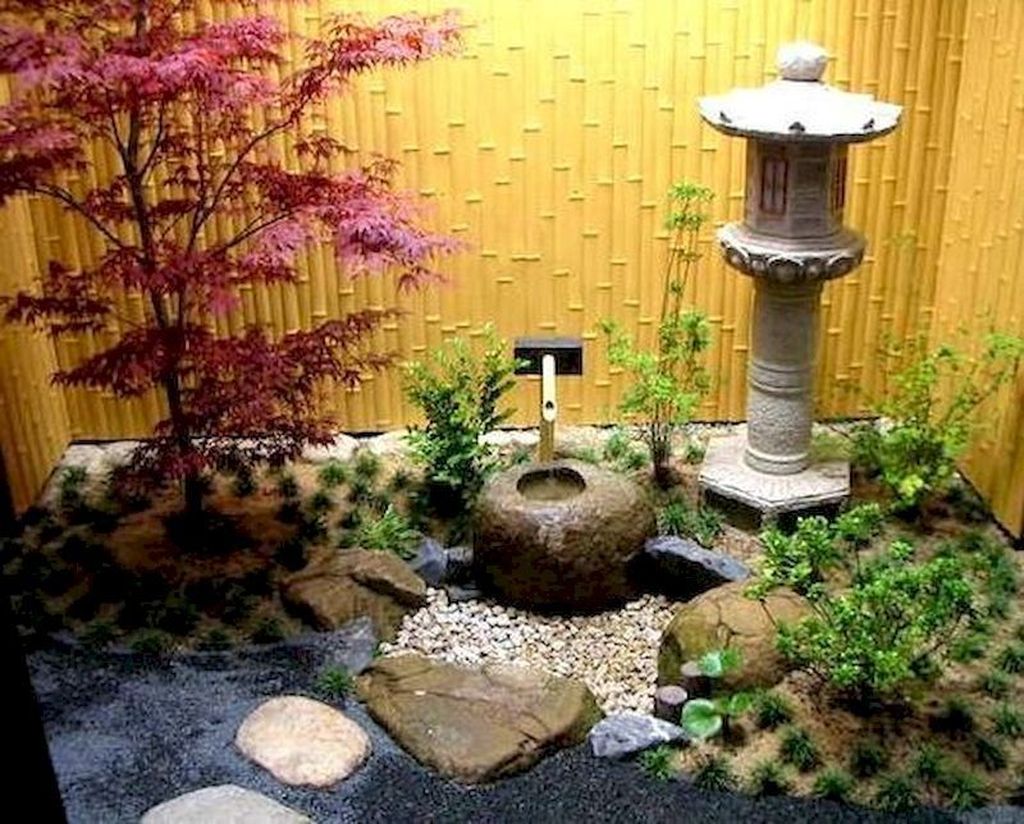
By combining different mosses with each other, interesting texture differences and thus unobtrusive eye-catchers can be realized in the Zen garden. Cushion bolax ( Azorella trifurcata), with its rosette-like growth, is also suitable for the Zen garden and makes a pretty eye-catcher. With its cushiony growth, this is an ideal and even more tread-resistant ground cover and is also considered particularly robust, which is why it is also suitable for semi-shady places. Moss substitute plants such as Irish-moss ( Sagina subulata) are also particularly popular in Zen gardens. Various native moss species such as the beard moss ( Barbula) or some species of haircap moss ( Polytrichum) are not only visually appealing but also particularly easy to care for.

However, the design with mosses is not as boring as it sounds at first, because they actually have numerous variations to offer. Traditionally, only one plant genus is allowed in the Zen garden: moss. Rake gravel into shape Plants for Zen gardens Insert plants by cutting the film in a crisscross pattern and planting the plants in the soil underneathħ. Line excavated bed with water-permeable filmĤ. Define floor plans and individual beds in your sketchĢ. Remove your lawn to prepare the Zen garden ġ. Finally, place stones and decorations and rake the typical patterns into the gravel to give the Zen garden its characteristic look. The height of the gravel layer can vary according to taste – but care should be taken to ensure that the surface can be raked easily later without the tool damaging the film. Now you are ready to fill the area with gravel. However, if you do not want to damage your garden fleece, you can put the plants in sufficiently large pots. Plants such as small bonsais or moss are planted by cutting crosswise into the film and planting the green garden inhabitants directly into the soil below. It is not necessary to fix the film, as it is reliably held in place by the heavy gravel. Then place a garden fleece or other water-permeable sheet in the excavated bed – this will later prevent grasses, weeds or other plants from making their way through the gravel layer. To do this, remove about the top 20 centimetres of garden soil. First of all, all the lawns that are in the area of the Zen Garden must be raked, including the roots. Once you have completed the sketch of your Zen garden, the work in the garden begins. Ideally, the individual areas should be laid out in such a way that they appear as natural as possible – this means that the transitions between the areas are smooth and that at first glance there is no beginning or end to be seen. Here you should also already draw the various gravel areas and the positioning of individual plants and stones so that you can calculate the appropriate amount of materials such as gravel and sand. The latter method is particularly popular, in which only a small part is converted into a Zen garden and separated from the rest of the property by a hedge or fence.Ī place that is easily visible from the terrace or window is ideal, as it is especially the contemplation of the Zen garden that conveys peace and serenity. First of all, you need to clarify whether you want to arrange your entire garden in the Zen style or whether you want to convert only a separate area. Traditional Zen gardens consist of only three elements: Gravel, stones and moss Planningīefore you start creating a Zen garden, accurate planning in the form of a sketch is crucial.

The goal of the Zen garden is to create, with the help of its basic elements, an environment that should represent nature and reflect the proportions of forests, mountain ranges and rivers. In the meantime, however, trees, especially topiaries and bonsais, are also frequently planted in Zen gardens, while flowering plants hardly play a role and are rarely encountered. In fact, moss is the only plant used in a traditionally constructed Zen garden. Stones, on the other hand, usually represent island or mountains, but can also stand for groups of animals. Flowing surface gradients and patterns raked into the gravel enhance the impression of a body of water. In fact, this is symbolized by the large gravel areas that are typical of this form of garden design. However, the first point in particular regularly causes confusion, as it is rare to find actual water in a Zen garden. The 3 main elements of the Zen gardenĪ traditional Zen garden classically consists of only three basic elements: Water, stones and moss. Creating a Zen garden is fortunately not difficult, so you can look forward to having your own aesthetic garden to admire and linger in. If you are looking for inner peace and a place for meditation, this type of garden design is what you need. Even in this country, the Japanese Zen garden is becoming more and more popular.


 0 kommentar(er)
0 kommentar(er)
